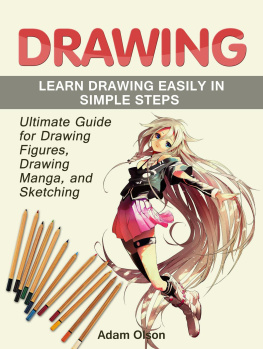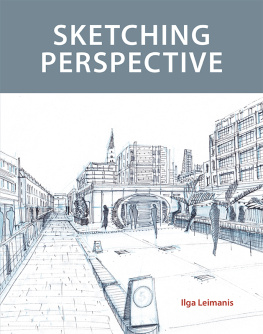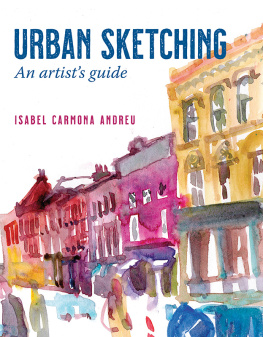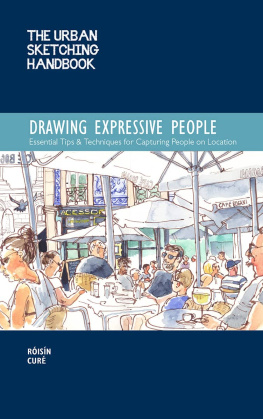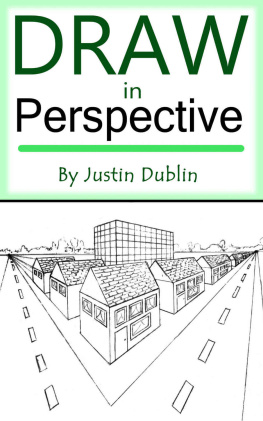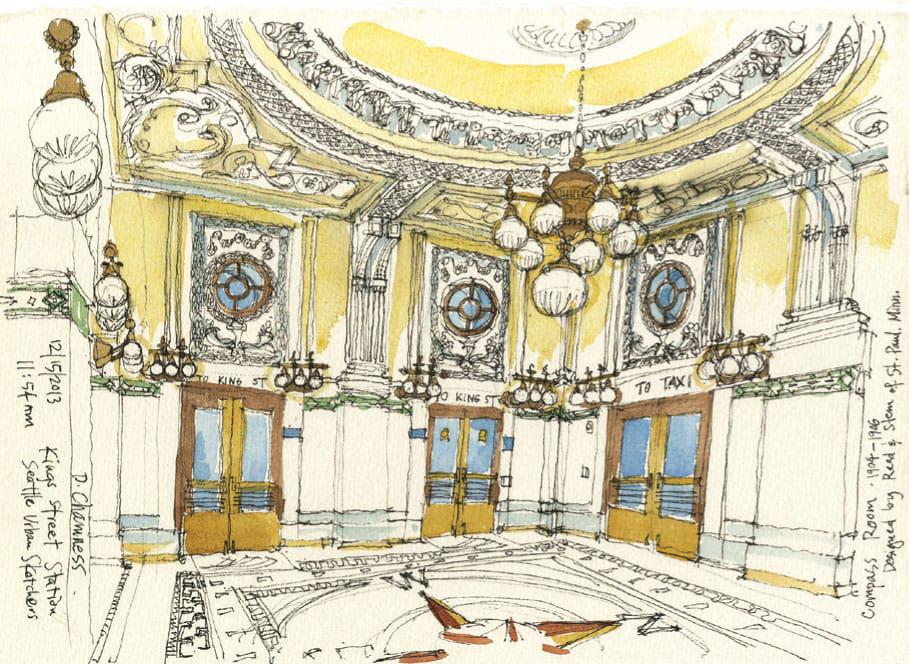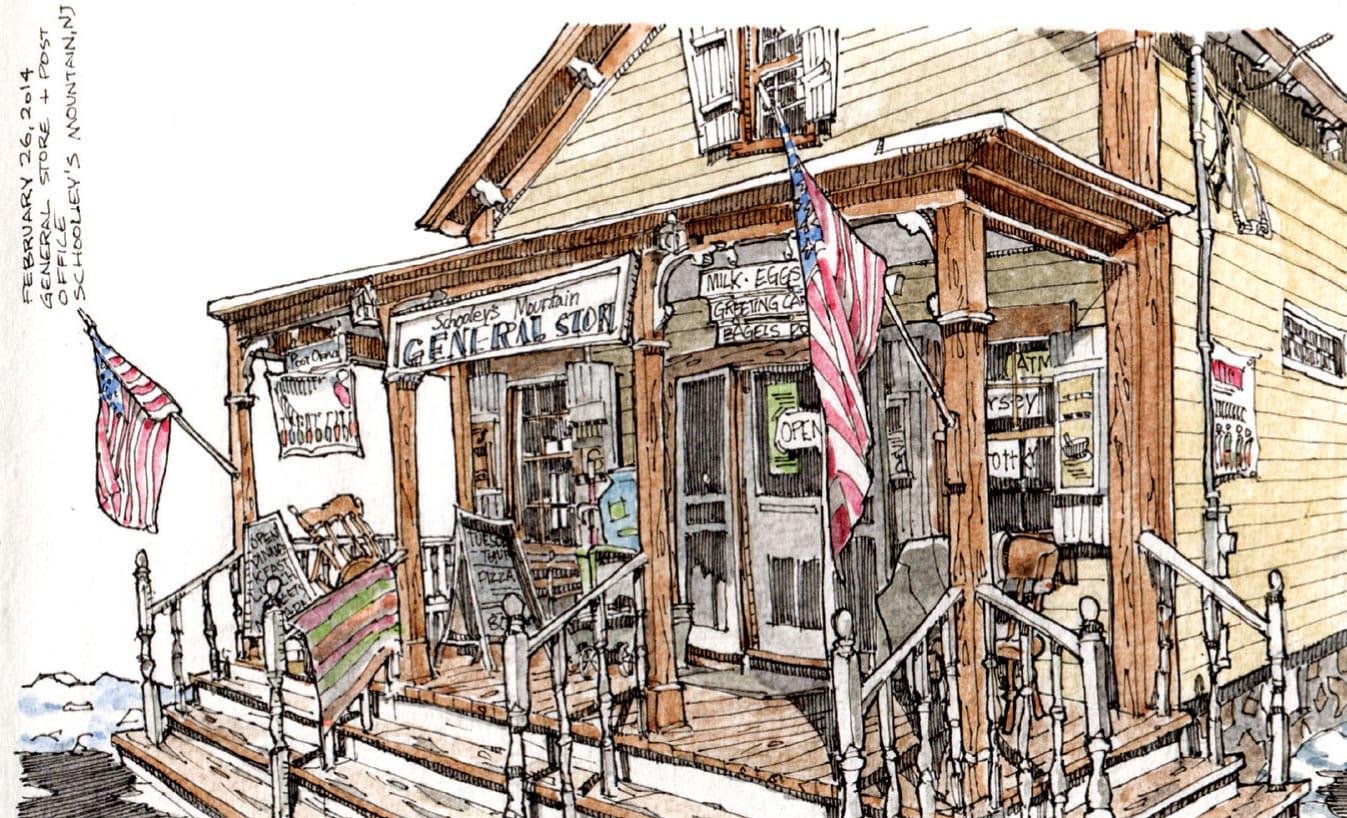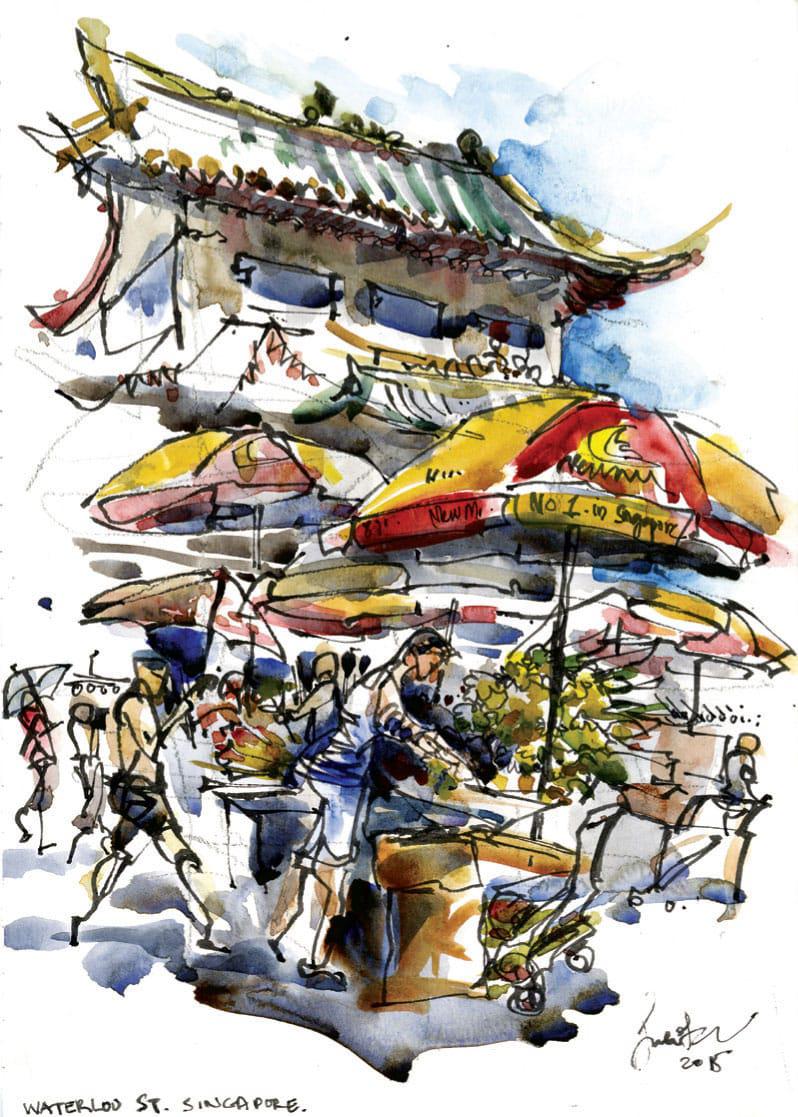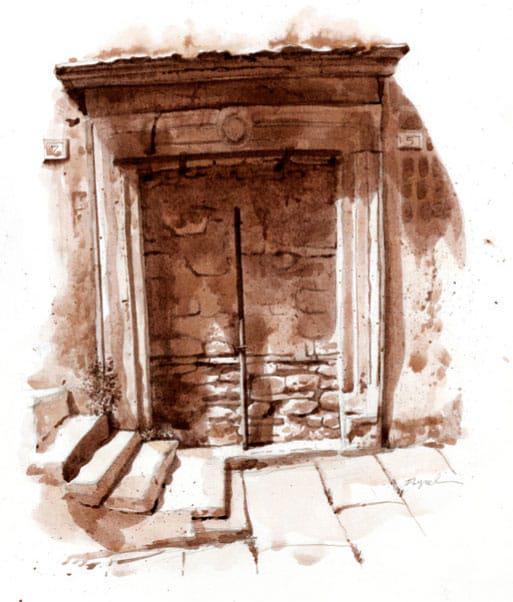About This Series
The Urban Sketching Handbook series takes you to places around the globe through the eyes and art of urban sketchers.
Architecture and Cityscapes , People and Motion , Reportage and Documentary Drawing , and now Understanding Perspective each book offers a bounty of lessons, tips, and techniques for sketching on location for anyone venturing to pick up a pencil and capture their world.
EVGENY BONDARENKO
Russia
Kowloon Walled City, Hong Kong
15.75 23.62 | 40 60 cm; Ink pencil, ink on watercolor paper; 2.53 hours. Two-point/worms eye view .
CONTENTS
INTRODUCTION
Imagine you are standing in an amazing space, say the Pantheon in Rome. Snapping a quick photo like everyone else isnt enoughyou want to somehow capture this experience, but your group is leaving in only half an hour. What do you do? SKETCH!
Sketching on location is powerful. You have to look at something really carefully to draw it. The process of drawing imprints what you see into your brain in such a way that years from now, the sounds of the people walking by, the scent of the rain, the feel of the warm air, and much more will all flood back when you look at your sketch. Urban Sketching is about capturing your experiences on paper, and more important, in your mind and heart. Its a great way to learn and remember.
That said, sketching on location can be challenging and overwhelming. Where do you start a sketch? How do you shrink the vast, busy scene in front of you onto your paper? How does perspective work? And where is that darn vanishing point? Understanding Perspective helps you bridge the theoretical world of perspective concepts with the real world of on-site sketching.
All good sketches start with good bones. Perspective is simply a set of rules discovered during the Italian Renaissance that allows us to translate what we see in our three-dimensional world onto a two-dimensional surface, such as a piece of paper or canvas. These principles provide us with a simple structure we can use to create the foundational lines in our sketches.
Perspective doesnt have to be frightening or something you avoid. Once you know some basics and a simple process, your sketches will be faster, easier, and more believableand it will change the way you see the world, as youll see perspective everywhere!
Best of all, when you leave Rome with sketchbook in hand, youll be bringing a bit of the Pantheon with you...
Pantheon, Rome, Italy
16 5 | 40.5 12.5 cm; Pencil, watercolor, Pentalic Aqua Journal; about 45 minutes.
One-point/eye-level view .
Even in this digital age, learning to sketch what you see is an extremely valuable skill, whether youre an architect, designer, or artist who draws from imagination, or someone who simply loves sketching over coffee at a neighborhood cafe. Thinking and drawing in perspective is powerful because it helps us understand spaces and places in the way we actually see and experience them.
This handbook provides the tools you need to create a believable sense of perspective in your sketches, no matter what style or media you use, by looking at a variety of work produced by different sketchers from around the globe. It also includes a lot of thumbnail diagrams to explain the perspective concepts featured in various sketches.
Tip
Try using a colored pencil to draw right over the thumbnails as a way to better understand the information.
DAVID CHAMNESS
USA
King Street Station: Compass Room
11 14 | 28 35.5 cm; Noodlers Black Ink, Winsor & Newton watercolors, watercolor paper; 2 hours. Two-point/eye-level view.
GUY MOLL
France
Saint-Aignan
5 12 | 12.5 30.5 cm; Ink, watercolor; about 1.5 hours. One-point/eye-level view.
We can learn so much by sketching the things we see. When sketching something like a castle in France or King Street Station in Seattle, its like peering into the past through a time machine, into the minds of the people who created the building or space.
What did they want us to notice first? Why did they want five windows versus six? What draws your eye? And what do you want to capture in your sketch?
JOSIAH HANCHETT
USA
Schooleys Mountain General Store
5 8.25 | 12.5 21 cm; Ink, watercolor; 34 hours. Two-point/eye-level view .
Sketching is also a great way to record the large and small events of daily life...wherever you are. Your kitchen, your neighborhood library, or your favorite coffee shop are all places where you can relax for an hour with a sketchbook.
Lots of sketchers talk about being in the zone when they workthe part of your brain that keeps track of time seems to shut off, and you are completely focused on seeing your subject and creating your sketchinterrupted only by the passersby who say, Wow, great job. I wish I could do that!
Paul Heaston is a master of linework and amazing wide-angle perspective views. His subject is often his home, coffee shops, or streets where he lives. His sketches elevate the ordinary to the status of art. Paul frequently draws his own hands and sketchbook into the image, allowing us to essentially see what he sees.
PAUL HEASTON
USA
At Buzz Cafe
6 9 | 15 23 cm; Tombow Grayscale Markers, Staedtler Pigment Liners, Stillman & Birn Alpha paper in a handmade sketchbook; 2 hours. Two-point fish eye/eye-level view.
Journalist, graphic artist, and Urban Sketchers founder Gabi Campanario uses sketching for visual note-taking and to report newspaper stories about the people and places where he lives.
GABRIEL CAMPANARIO
USA
Waterfront
5.5 8 | 14 20.5 cm; Uni Ball Vision fine pen, watercolor; 30 minutes. One-point/eye-level view.
Suhita Shirodkar does amazing sketches of people in action and chaos, with a backdrop of accurate perspective. Here she captured a busy flower market in Singapore.
SUHITA SHIRODKAR
USA
Waterloo Street, Singapore
12 8.5 | 30.5 21.5 cm; Fountain pen, watercolor; about 30 minutes. Two-point/eye-level view .


